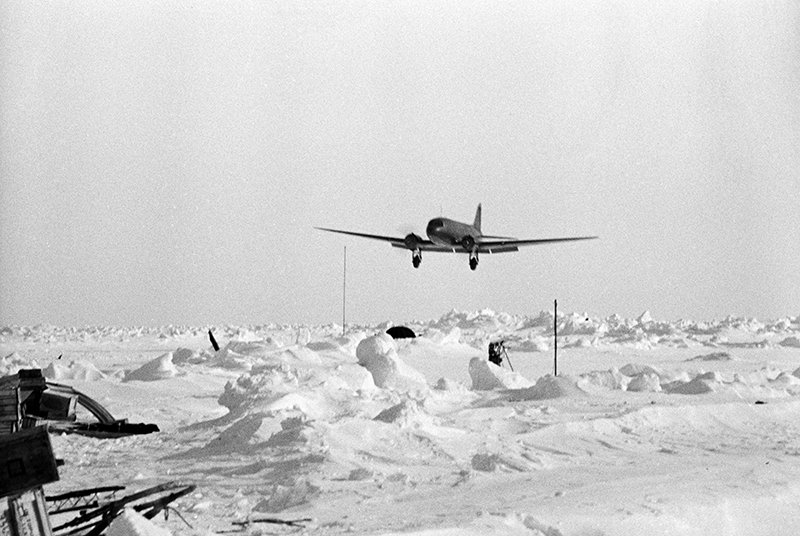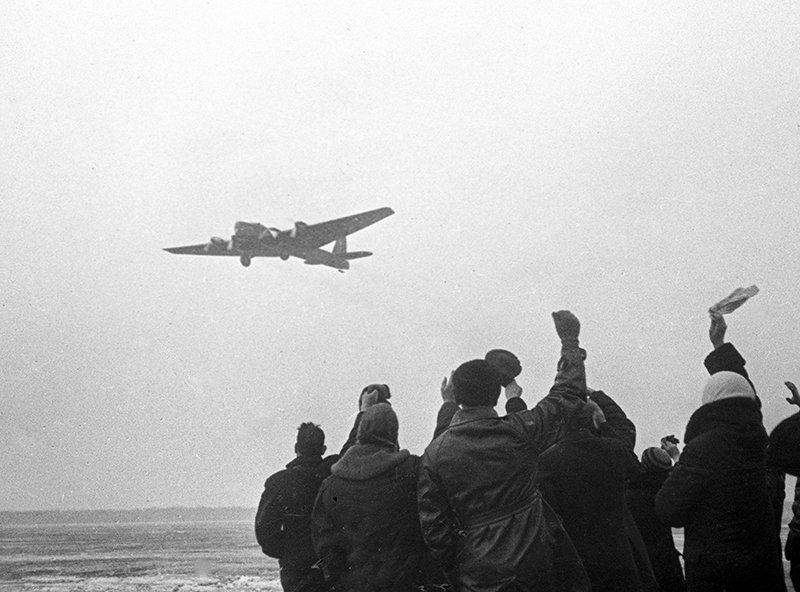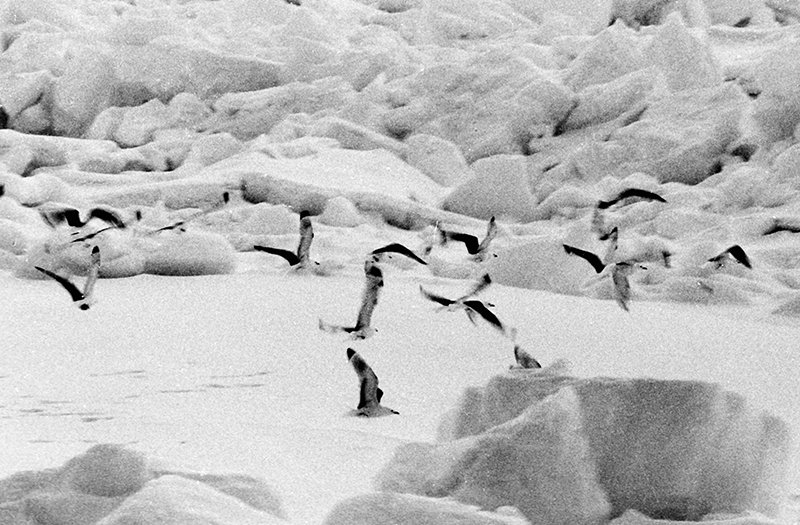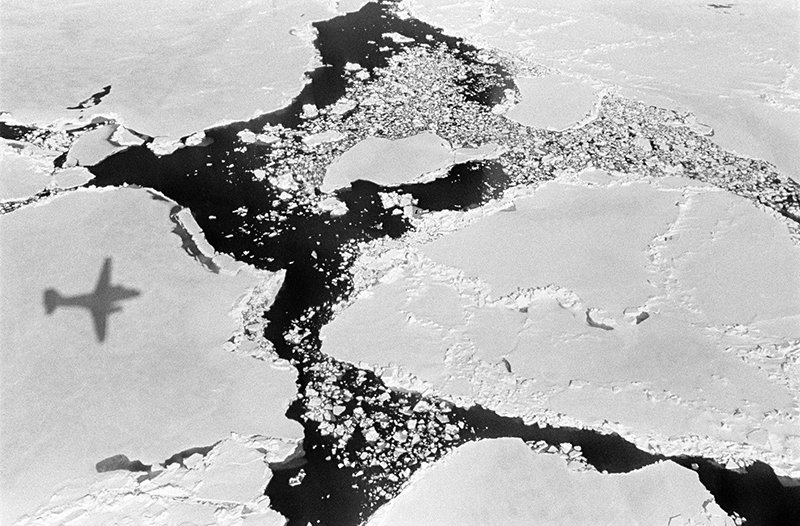In mid-February, the camp was located on an ice fragment measuring 30 by 40 meters. Although the ice-floe had stopped moving, it was too dangerous to stay inside snow-covered tents there because the compression might resume, catching those asleep by surprise. All the expedition members stayed inside two tents that were relocated to a nearby ice-floe. They also cooked there.
Everyone slept on reindeer skins on the "floor." Clear weather set in at night, and the wind abated. Temperatures dropped to minus 42–43 degrees. Although the gas range burned merrily all night long, it was very cold inside the tents
On February 19, most consignments were taken to another location. It was only possible to partially remove our habitation tents, to take them across the ice cracks and to load them inside a vehicle. Others stuck fast and could not be shifted.
Only habitation tents were installed at the new camp, with four people staying inside each of them. All others settled down inside the transceiver tent, taking turns to sleep on the two beds. The "canteen" was installed only a month later.
Naturally, living conditions here turned out to be much harder than those at the good old home-like camp. But people hardly noticed because the expedition was coming to an end. Everyone wanted to conduct observations as soon as possible and to compensate for delays caused by bad weather.
Indeed, we completed all projects as planned. On April 11, 1951, all expedition members were taken off the ice-floe and airlifted to the mainland by a polar aviation unit.
This is not the end of the story of the SP-2 drifting research station because the abandoned ice-floe continued its journey. On April 28, 1954, an air crew spotted the ice-floe fragment and it was meticulously inspected later on
Scientists obtained a lot of interesting data from that fragment. But even more valuable material was provided by new drifting stations, which carried on the Central Arctic research effort.
Excerpts from the chapter 376 Days on a Drifting Ice-Floe from the 12 Heroic Feats collection.
Hydrometeorology Publishers, 1964


![Polar bear among hummocks and tussocks near Severny Polyus [North Pole] 13 drifting station's town Polar bear among hummocks and tussocks near Severny Polyus [North Pole] 13 drifting station's town](https://arctic.ru/images/86/64/866478.jpg)


